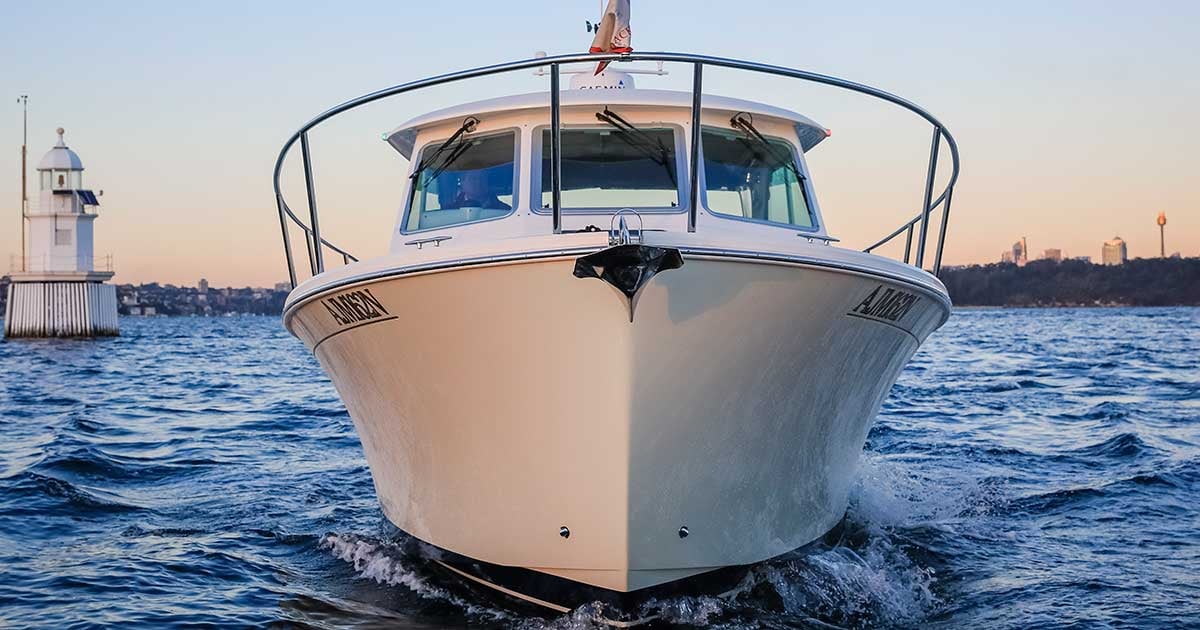BUYING ADVICE #3
There are no shortcuts in building quality Downeast-style cruising vessels...
As a buyer, understanding some very important facts about good boat design and construction will allow you to ask the right questions and ensure you are buying the best boat for your money.
Like most things in life, you get what you pay for…
HULL CONSTRUCTION
It’s important to know exactly what you are buying, so understanding the methods of fibreglass boat construction is a good place to start.
While many boat manufacturers and salespeople often skirt this subject – suggesting ‘fibreglass is fibreglass’ and there is no appreciable difference – nothing could be further from the truth.
Many shiny white boats on display at the boat show could well be unsafe and unseaworthy vessels that could be an ownership burden from day one. Generally, the most serious problems present after the gloss has faded and the dealer or manufacturer (if they are still in business) often hide behind warranties written in anticipation of these issues.
OPEN MOULD TECHNIQUE
In the early days of fibreglass boat construction, boat hulls and fibreglass parts were made using an ‘open mould technique’. In fact, many luxury cruiser manufacturers continue to use this method today.
Executed correctly, using quality materials and documented processes, the open mould technique can produce boats that are strong, durable and capable of withstanding the punishment of the open sea for years.
Executed poorly, however, traditional open moulding techniques may result in a weak hull that will invariably develop osmosis and potential delamination rendering it both unsafe and expensive to repair.

VACUUM-INFUSION PROCESS (VIP)
More recently, infusion moulding technologies – specifically, Vacuum-Infusion Processing (VIP) – have improved the quality consistency of fibreglass boats, as well as improving the overall boatbuilding environment for the builders by reducing airborne volatile organic compounds.
In a nutshell, VIP is a fibre-reinforced plastic (FRP) composite manufacturing technique that allows boatbuilders to lay the laminates in the mould in a dry stack and ‘infuse’ the resin in a precise quantity. This highly-controlled and predictable process eliminates the imperfections that inevitably arise through the outdated open mould technique, delivering a perfect result – every time.
While more costly than traditional open mould methods, the finished VIP product is vastly superior, providing a consistent high quality product with increased strength which will stand the test of time in a harsh saltwater environment.
VIP offers:
- Reduced material waste: VIP uses less resin than traditional lamination methods, resulting in less material waste.
- Consistent resin distribution: VIP uses a vacuum to pull resin into the laminate, ensuring an even distribution of resin throughout the mould. This results in a higher-quality and more consistent finished product.
- Improved strength-to-weight ratio: VIP can produce hulls and parts with a higher strength-to-weight ratio than traditional lamination methods, making them stronger and more durable.
- Improved surface finish: VIP delivers a smoother surface finish than traditional lamination methods, reducing the need for post-processing and polishing.
Overall, VIP moulding is an efficient and high-quality method of building boats, which can improve the performance and longevity of vessels.
Back Cove and Sabre motor yachts use VIP moulding technologies exclusively in their construction.




